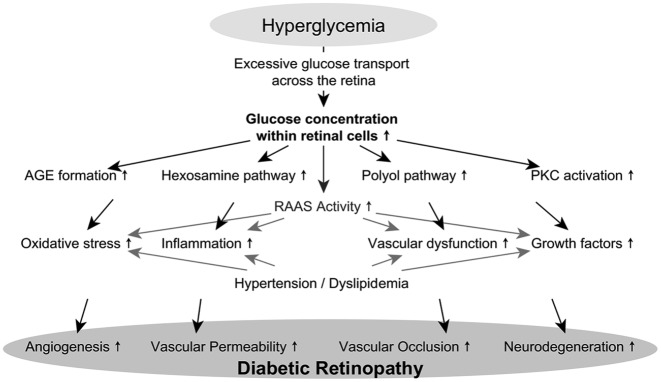Figure 1.
Pathomechanisms involved in the pathogenesis of diabetic retinopathy.
Intracellular hyperglycemia induces the increased formation of advanced glycation end products (AGEs), upregulated hexosamine pathway, increased flux through the polyol pathway, and increased activation of protein kinase C (PKC). Because of these toxic pathways, reactive oxygen species and thus oxidative stress is increased, expression of inflammatory proteins and growth factors are triggered and, ultimately, damage to the retinal microvasculature is induced. These cell toxic consequences are worsened by activation of the renin–angiotensin–aldosterone system (RAAS) in retinal cells, uncontrolled hypertension, and dyslipidemia. Increased angiogenesis, vascular permeability, vascular occlusion, and neurodegeneration present the pathologic correlate and together characterize the pathology of diabetic retinopathy.

